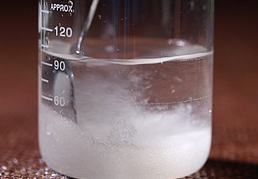Paint adhesion, the ability of paint to bond to a surface, is a critical factor in ensuring the longevity and quality of a paint job. Hydroxypropyl Methylcellulose (HPMC) serves as a versatile additive in paint formulations, playing a pivotal role in improving adhesion. This article delves into the specific mechanisms by which HPMC enhances paint adhesion and its importance in achieving durable and aesthetically pleasing finishes.
Understanding HPMC
Hydroxypropyl Methylcellulose (HPMC) is a non-ionic cellulose ether derived from natural cellulose. It is widely used in various industries, including construction, pharmaceuticals, and paints, for its excellent thickening, film-forming, and stabilizing properties. In the context of paint formulations, HPMC acts as a multifunctional additive that contributes to adhesion improvement.
Key Roles of HPMC in Enhancing Paint Adhesion
- Promoting Surface Wetting: HPMC enhances the wetting properties of paint, allowing it to spread evenly across the substrate surface. By reducing surface tension, HPMC facilitates better contact between the paint and the substrate, promoting adhesion.
- Binder and Stabilizer: As a binder, HPMC helps hold the various components of the paint formulation together. It prevents settling and separation of pigments, binders, and additives, ensuring a homogeneous mixture that adheres uniformly to the surface.
- Film Formation: Upon application, HPMC forms a thin film on the substrate surface as the paint dries. This film acts as a bridge between the substrate and the paint, enhancing adhesion by providing a strong interfacial bond.
- Preventing Sagging and Dripping: HPMC thickens the paint, improving its viscosity and preventing sagging or dripping during application. This ensures that the paint remains in place, allowing it to adhere effectively to vertical or overhead surfaces.
- Flexibility and Durability: The presence of HPMC in the paint formulation contributes to the flexibility and elasticity of the dried paint film. This flexibility allows the paint to accommodate substrate movement and environmental stresses without cracking or peeling, thereby enhancing long-term adhesion and durability.
Applications and Benefits
The incorporation of HPMC into paint formulations offers several benefits:
- Improved Adhesion: Enhanced wetting, film formation, and stabilization contribute to stronger adhesion between the paint and the substrate, resulting in a more durable finish.
- Enhanced Aesthetic Appeal: By promoting uniform coverage and reducing defects such as drips or sags, HPMC helps achieve a smoother and more aesthetically pleasing paint surface.
- Increased Longevity: The flexibility and durability imparted by HPMC extend the lifespan of the paint job, reducing the need for frequent maintenance and repainting.
Conclusion
Hydroxypropyl Methylcellulose (HPMC) plays a vital role in enhancing paint adhesion by improving surface wetting, acting as a binder and stabilizer, facilitating film formation, and preventing sagging or dripping. The inclusion of HPMC in paint formulations leads to improved adhesion, durability, and aesthetic quality, making it an indispensable additive for achieving long-lasting and high-quality paint finishes.


